| Sun StorEdge 3000 Family Best Practices Manual
|
    |
Best Practices for the Sun StorEdge 3310 SCSI Array
|
This document highlights SCSI best practices which apply to the Sun StorEdge 3310 SCSI array.
3310 SCSI array.
Abstract
This document outlines small and large storage solutions for six common entry-level server environments:
- Print
- File
- Application
- Email
- Database
- Consolidation
These solutions can optimally use the Sun StorEdge 3310 SCSI Array, a next-generation Ultra3 SCSI storage system designed to provide direct attached storage (DAS) to entry-level servers.
These solutions feature many of the performance and reliability, availability and serviceability (RAS) features using familiar SCSI technology, and can be used as-is or tailored to fit your exact needs.
Examples of customization opportunities include choosing RAID protection levels, selecting SCSI bus configurations, adding more disks and adding disk enclosures. A large number of potential storage solutions exist between the small and large recommendations. Choosing a configuration that fits within this range will provide the best results.

|
Caution - If you assign an IP address to an array in order to manage it out-of-band, for security reasons make sure that the IP address is on a private network, rather than a publicly routable network.
|
There are two main reasons for placing your arrays on a private subnet:
- When your array is on a public network, it is susceptible to viruses, worms, and other malware attacks.
- A variety of security software is available to detect and mitigate these attacks. Some port-scanning and other security software can have an adverse impact on your ability to access data. In extreme cases, some of this software can cause Sun StorEdge 3000 Family arrays to hang.
Since it is not possible to predict the side-effects of all current and future security software products, place your Sun StorEdge 3310 SCSI arrays and Sun StorEdge 3510 FC arrays on private subnets.
Entry-level Server Storage RequirementsSingle Processor Server Applications
Print, file and application services are essential network requirements and have become among the most popular uses of entry-level servers. The servers used to provide these functions are generally very inexpensive, highly compact units that are often installed in racks for convenience.
One example of such a server is the Sun Fire V120, an expandable single-processor server that occupies just 1 unit (1U) of rack space. Network servers are often distributed throughout an enterprise, making the Sun StorEdge 3310 SCSI Array ideally suited for these applications due to its cost-effective direct attached storage design.
TABLE 1 Storage Requirements for Single Processor Servers
|
|
Print Server
|
File Server
|
Application Server
|
|
Availability
|
Medium
|
Medium to High
|
Medium to High
|
|
Storage Capacity
|
Low
|
Low to High
|
Low to Medium
|
|
Special Needs
|
High Data Rates
and Low Cost
|
High Data and Transaction Rates
|
Low Cost and High Transaction Rates
|
|
Access Pattern
|
Sequential
|
Sequential
|
Random
|
Multiple Processor Server Applications
Another popular use of entry-level servers is for providing mail, database and other services to workgroup, departmental and branch office users. The server and storage solutions used to provide these sophisticated services must be able to scale in application performance and storage capacity to keep pace with the needs of increasing number of network users.
The Sun Fire V480 Server and StorEdge 3310 SCSI Array are excellent examples of highly scalable solutions and combine to form a powerful solution. Performance scales by adding server memory and processors while capacity scales by adding enclosures and disks.
TABLE 2 Storage Requirements for Multiple Processor Servers
|
|
Mail Server
|
Database Server
|
Consolidated Server
|
|
Availability
|
High
|
High
|
High
|
|
Storage Capacity
|
Medium to High
|
Medium to High
|
Medium to High
|
|
Special Needs
|
High Transaction
and Data Rates
|
High Transaction
and Data Rates
|
High Transaction
and Data Rates
|
|
Access Pattern
|
Random
|
Random
|
Random
|
Best Practices: Print Servers Architecture and Configuration
FIGURE 1 Optimized Architecture for Print Servers

TABLE 3 Configuration Details for Print Servers (JBOD Only) (1 of 2)
|
|
Small Configuration
|
Large Configuration
|
|
RAID Enclosures
|
0
|
0
|
|
JBOD Enclosures
|
1
|
1
|
|
Number of Controllers
|
Not Applicable
|
Not Applicable
|
|
Number of Disks
|
5
|
12
|
|
Bus Configuration
|
Dual Bus
|
Dual Bus
|
|
Cache Optimization
|
Not Applicable
|
Not Applicable
|
|
RAID Levels Used
|
Host Based
|
Host Based
|
|
Drive Configuration
|
Two LUNs
One Spare
|
Two LUNs
One Spare
|
Tips and Techniques
- Using a server's built-in SCSI port (if compatible) to minimize cost will result in satisfactory print server performance in most environments, even if the SCSI port does not operate at full Ultra160 speeds.
- Data protection can be provided via host-based software volume management software using the operating system's volume manager or a third-party volume manager. The recommended configurations will provide RAS similar to a single controller RAID array.
- Each server must be connected to a different SCSI bus when using the large recommended configuration.
- When adding a second server, one RAID 1 logical drive can be reassigned to the second server by moving its drives to the second SCSI bus if the server operating systems and volume managers are compatible.
Best Practices: File ServersArchitecture and Configuration
FIGURE 2 Optimized Architecture for File Servers
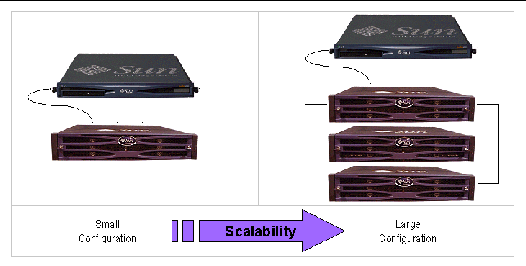
TABLE 4 Configuration Details for File Servers
|
|
Small Configuration
|
Large Configuration
|
|
RAID Enclosures
|
1
|
1
|
|
JBOD Enclosures
|
0
|
2
|
|
Number of Controllers
|
1
|
2
|
|
Number of Disks
|
5
|
36
|
|
Bus Configuration
|
Single Bus
|
Single Bus
|
|
Cache Optimization
|
Sequential
|
Sequential
|
|
RAID Levels Used
|
RAID 3
|
RAID 5
|
|
Drive Configuration
|
One LUNs
One Spare Drive
|
Two LUNs
One Spare Drive
|
Tips and Techniques
- You can use an Ultra3 SCSI port to connect the RAID array whenever the server is connected to a LAN via gigabit Ethernet. Otherwise, a slower SCSI connection may create a performance bottleneck on the SCSI connection.
- If the server has room for only one host adapter and you must choose between Ultra160 SCSI or Gigabit Ethernet adapters, install the Gigabit Ethernet host adapter and use the server's built-in SCSI port to provide the most benefit to users. This will, however, reduce the I/O to a slower SCSI speed.
- A configuration with redundant RAID controllers and two logical drives provides very high transaction rates, even if there are a relatively small number of disk drives in use.
- Adding disk drives to logical drives will linearly improve transaction performance whenever cache misses occur, regardless of whether the additional storage capacity is utilized or not.
- Rapidly growing network response times as users are added is an indication the file server is limiting performance. If this occurs, examine the utilization of server memory, processors and network adapters and expand those with the highest usage.
Best Practices: Application Servers Architecture and Configuration
FIGURE 3 Optimized Architecture for Application Servers
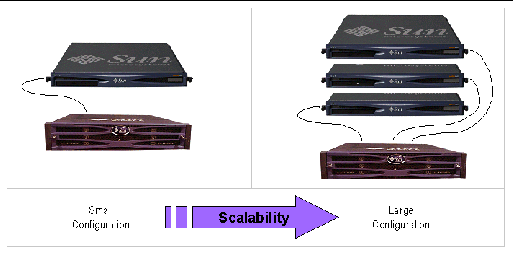
TABLE 5 Configuration Details for Application Servers
|
|
Small Configuration
|
Large Configuration
|
|
RAID Enclosures
|
1
|
1
|
|
JBOD Enclosures
|
0
|
0
|
|
Number of Controllers
|
1
|
2
|
|
Number of Disks
|
5
|
12
|
|
Bus Configuration
|
Dual Bus
|
Dual Bus
|
|
Cache Optimization
|
Random
|
Random
|
|
RAID Levels Used
|
RAID 5
|
RAID 5
|
|
Drive Configuration
|
One LUN
One Spare Drive
|
Two LUNs
One Spare Drive
|
Tips and Techniques
- A single RAID array providing storage for two servers reduces storage costs with little to no effect on application performance.
- Use the built-in SCSI ports of application servers to further minimize costs rather than adding a host adapter, particularly when not using Gigabit Ethernet to the LAN. Even a 40 MB/sec SCSI port is several times faster than a Fast Ethernet port.
- A second RAID controller can be added to enhance RAS without adding disks and creating a second Logical Drive. Redundant RAID controllers will operate in an active-standby mode when only one logical drive is available.
- Enhance application server availability by booting them from the RAID array rather than their internal drives. This also facilitates the rapid replacement of malfunctioning or failed servers.
- If attaching the RAID array to multiple hosts, you will want to assign a separate LUN to each server and SCSI bus.
Best Practices: Mail Servers Architecture and Configuration
FIGURE 4 Optimized Architecture for Mail Servers
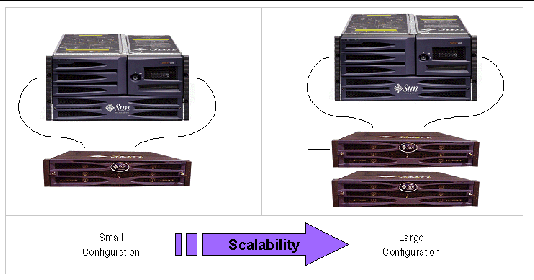
TABLE 6 Configuration Details for Mail Servers
|
|
Small Configuration
|
Large Configuration
|
|
RAID Enclosures
|
1
|
1
|
|
JBOD Enclosures
|
0
|
1
|
|
Number of Controllers
|
2
|
2
|
|
Number of Disks
|
12
|
24
|
|
Bus Configuration
|
Dual Bus
|
Dual Bus
|
|
Cache Optimization
|
Random
|
Random
|
|
RAID Levels Used
|
RAID 3 and 5
|
RAID 3 and 5
|
|
Drive Configuration
|
Two LUNs
One Spare Drive
|
Two LUNs
One Spare Drive
|
Tips and Techniques
- Definitely use two Ultra160 SCSI ports when connecting the RAID array to the server for best performance.
- The recommended configuration for email servers consists of one RAID 3 and one RAID 5 logical drive. Use the RAID 3 logical drive to store attachments and other large files and the RAID 5 logical drive to store messages and small files.
- There is no need for the two logical drives to include similar numbers of disks. Assign disks as needed to establish the desired amounts of RAID 3 and RAID 5 storage capacity. Assign at least one disk as a spare.
- Scale storage capacity by adding disks to either the RAID 3 or RAID 5 logical drive, depending on need.
- Balance performance by assigning the RAID 3 logical drive to one RAID controller and the RAID 5 logical drive to the other RAID controller.
- When connecting a server to the array using two SCSI buses, you need to map each LUN to one SCSI bus so that they can both be active and have a dedicated path.
Best Practices: Database Servers Architecture and Configuration
FIGURE 5 Optimized Architecture for Database Servers
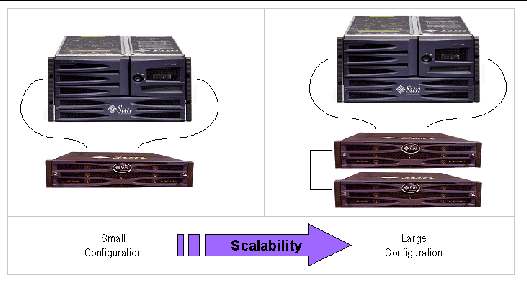
TABLE 7 Configuration Details for Database Servers
|
|
Small Configuration
|
Large Configuration
|
|
RAID Enclosures
|
1
|
1
|
|
JBOD Enclosures
|
0
|
1
|
|
Number of Controllers
|
2
|
2
|
|
Number of Disks
|
12
|
24
|
|
Bus Configuration
|
Dual Bus
|
Dual Bus
|
|
Cache Optimization
|
Random
|
Random
|
|
RAID Levels Used
|
RAID 1 and 5
|
RAID 1 and 5
|
|
Drive Configuration
|
Two LUNs
One Spare Drive
|
Two LUNs
One Spare Drive
|
Tips and Techniques
- Database servers make heavy use of storage resources. Always use Ultra160 SCSI ports for best performance. Further optimize performance by dedicating one RAID controller to each logical drive.
- The recommended configuration for database servers consists of one RAID 1 and one RAID 5 logical drive. Use the RAID 5 logical drive to store data files and the RAID 1 (1+0) logical drive to store tables and other performance sensitive files.
- Assign two drives as global spares, four drives to the RAID 1 logical drive (it automatically becomes RAID 1+0) and the remaining drives to the RAID 5 logical drive. Scale storage capacity by adding disks to the RAID 5 logical drive.
- Adding disk drives to RAID 5 logical drives will linearly improve transaction performance whenever cache misses occur, regardless of whether the additional storage capacity is utilized or not.
- For environments with extreme performance needs, use two of the small configuration arrays rather than one of the large configuration arrays. Doing so will double storage performance for less than twice the storage cost.
- When connecting a server to the array using two SCSI buses, you need to map each LUN to one SCSI bus so that they can both be active and have a dedicated path.
Best Practices: Consolidated ServersArchitecture and Configuration
FIGURE 6 Optimized Architecture for Consolidated Servers
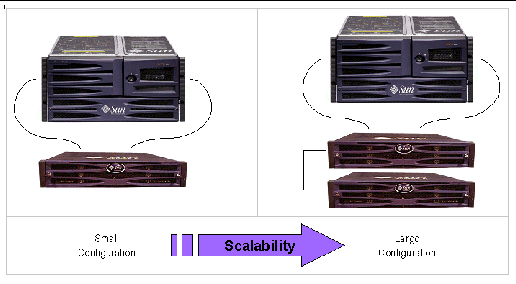
TABLE 8 Configuration Details for Consolidated Servers
|
|
Small Configuration
|
Large Configuration
|
|
RAID Enclosures
|
1
|
1
|
|
JBOD Enclosures
|
0
|
1
|
|
Number of Controllers
|
2
|
2
|
|
Number of Disks
|
12
|
24
|
|
Bus Configuration
|
Dual Bus
|
Dual Bus
|
|
Cache Optimization
|
Random
|
Random
|
|
RAID Levels Used
|
RAID 1, 3 and 5
|
RAID 1, 3 and 5
|
|
Drive Configuration
|
Three LUNs
One Spare Drive
|
Three LUNs
One Spare Drive
|
Tips and Techniques
- Consolidated servers have very dynamic storage requirements. Use Ultra160 SCSI ports to eliminate potential bandwidth bottlenecks between the server and RAID array.
- If most of the server's resources are used for databases, create a RAID 1 logical drive using two disks, for log and transaction data. If more RAID 1 capacity is required in the future, create a new RAID 1 logical drive using two unassigned disks. Otherwise, use a portion of the RAID 3 logical drive for database storage as an alternative to a separate, dedicated RAID 1 logical drive.
- To avoid reduced performance, it is recommended that you add extra storage when a LUN reaches 80% full.
- Balance workloads by assigning the RAID 5 logical drive to one RAID controller and the RAID 3 logical drive to the other controller. If there is a RAID 1 logical drive created, assign it to the same RAID controller as the RAID 3 logical drive.
- When connecting a server to the array using two SCSI buses, you need to map each LUN to one SCSI bus so that they can both be active and have a dedicated path.
Summary
Entry-level servers are used for wide range of applications with distinct storage requirements, so the Sun StorEdge 3310 SCSI Array features a modular architecture with flexible configurations. For example, a storage solution can consist of a JBOD array, a RAID array or a combination of both.
Configuration preferences include user-selectable RAID protection levels, controller optimization and more. Modularity and flexibility allow the storage solution to be quickly and easily adapt to a particular environment.
| Sun StorEdge 3000 Family Best Practices Manual
|
816-7293-13
|
    |
Copyright © 2004, Sun Microsystems, Inc. All rights reserved.
 3310 SCSI array.
3310 SCSI array.





